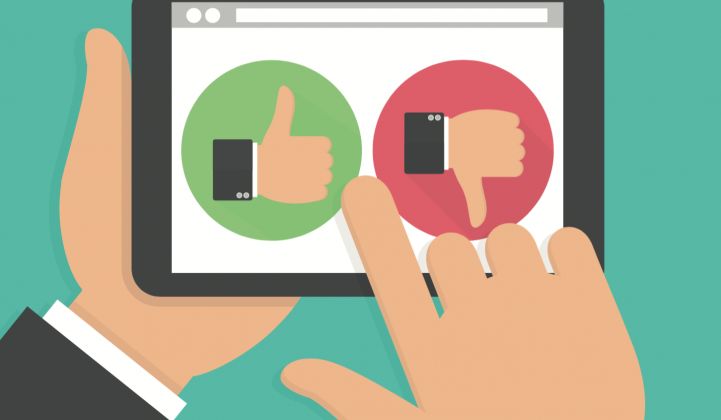As consumers, we have been conditioned to expect efficient, seamless and customized interactions with our service providers -- from our phone company to our bank. And we’ve become accustomed to these providers widening their net and delivering a broader array of services over time.
Take, for example, credit card companies. Ten years ago, they were a means to an end. A customer purchased what she needed on credit, and then paid the bill either when it arrived or slowly over time. Today, credit card companies have become a financial hub for many consumers -- in addition to providing value added services, like points and rewards, they also provide security and monitoring, alerting customers when fraud is suspected or detected.
So, how have credit card companies successfully moved from a space based purely on transactions to one that is built upon a strong customer relationship? By using customer data to deliver personalization at each moment of the customer journey.
As personalization becomes more and more prevalent across industries from retail to banking, consumers are increasingly expecting to build a similar type of relationship with their energy provider. In fact, according to research from Accenture, 82 percent of consumers say that energy providers should personalize new energy products and services to their needs and preferences in order to drive sales.
Unfortunately, many consumers don’t feel that their energy provider is stepping up to the plate. Twenty-eight percent of surveyed consumers say their energy providers’ website is not personalized and 31 percent say the site lacks the information they need.
While this research is specific to residential energy consumers, it highlights a real need for energy providers to re-evaluate the way they engage all their customer segments. In order to meet today’s strategic objectives around energy efficiency, customer satisfaction and revenue growth, it is essential that utilities build deeper customer relationships. And business customers, which account for approximately 60 percent of a utility's load, are a critical segment for utilities to consider.
To drive engagement with this critical customer segment, utilities need to provide businesses with easily digestible, personalized energy information that enables them to make smart decisions about their energy use. And, they need to provide this information through the channels that their business customers prefer to use -- whether that’s mobile, web or the telephone.
Mapping the customer journey
To start, utilities should focus on demonstrating customer knowledge and understanding at every corner. Utilities can use customer journey mapping as a process to identify key touch points and moments where inserting personalized energy insights will improve the customer experience.
By leveraging existing customer data and the power of data analytics, utilities can deliver value-added information throughout the customer journey. To offer up real value, the key is to move core customer touch points away from being centered on negative experiences, like an unexpectedly large bill, to instead focus on positive experiences, like a proactive weekly energy report that informs a customer about a program that could save her business money.
Winning customer trust and growing customer satisfaction begins with building stronger customer relationships. By mapping the customer journey and inserting customer insight at key touch points, utilities can react to changing customer demands, educate customers on energy optimization options and stay ahead of evolving customer expectations.
Delivering multichannel customer engagement
In today’s digitally driven world, consumers expect to receive the same level of service through digital channels as through traditional channels such as the telephone. Making greater use of digital tools boosts customer engagement and can avoid frustration.
This year's GTM Squared survey on mastering the utility sales cycle saw utilities put noticeably greater emphasis on customer engagement than in 2016. Utilities ranked customer engagement as the No. 1 area they're investing in, and the No. 1 area in which they felt they could improve.
To help meet these expectations, utilities should focus on integrating customer insights into all their channels -- ensuring they deliver consistent information and experiences across their website, mobile application, email and telephone communications. Utilities will find that by engaging customers with consistent, personalized content through every channel will not only improve the customer experience, but also boost customer loyalty and drive sales.
Building engagement into existing systems and processes
To make this all work, utilities need to find cost-effective ways to build this multi-channel engagement strategy into existing internal systems and organizational structures. As a starting point, utilities should assess where existing investments can be married with new technology to bring a step change to the customer experience.
Utilities should look for opportunities to optimize existing investments in internal systems, such as customer relationship management (CRM) and customer information systems (CIS). Incorporating customer insights into these systems will enable internal staff, such as customer service and sales teams, to deliver improved customer experiences in every interaction. It will also improve the digital and self-service experiences by enabling customers to access personalized energy insights quickly and easily.
Customer insights have the power to bring together previously siloed service, marketing and sales departments, and utilities should seek to create consistency across all customer-facing departments. By giving these teams a steady set of customer data and insights, utilities can drive increased productivity and reduce service costs.
With utility spend on customer engagement expected to grow to $774 million by 2022, energy providers are on the right track when it comes to meeting customer expectations. However, customer engagement doesn't just mean offering personalized energy insights -- utilities must continue to focus on building long-lasting customer relationships.
To truly move the needle and build deeper customer relationships, utilities must provide these personalized energy insights through all their customer touch points and communication channels. It could be the difference between building a loyal customer base and losing out to the competition.
***
Indran Ratnathicam is the vice president of marketing and strategy for FirstFuel Software.




